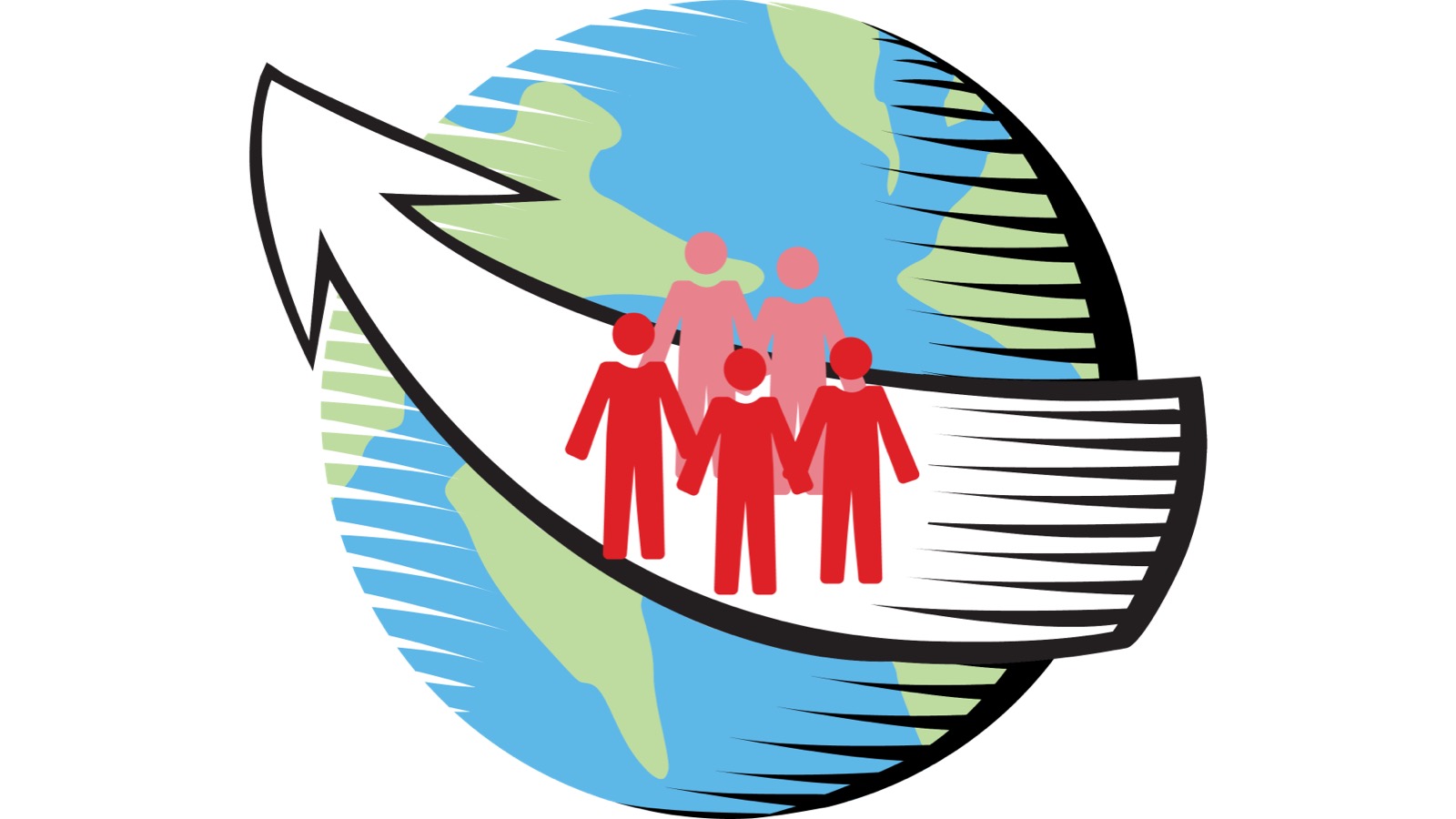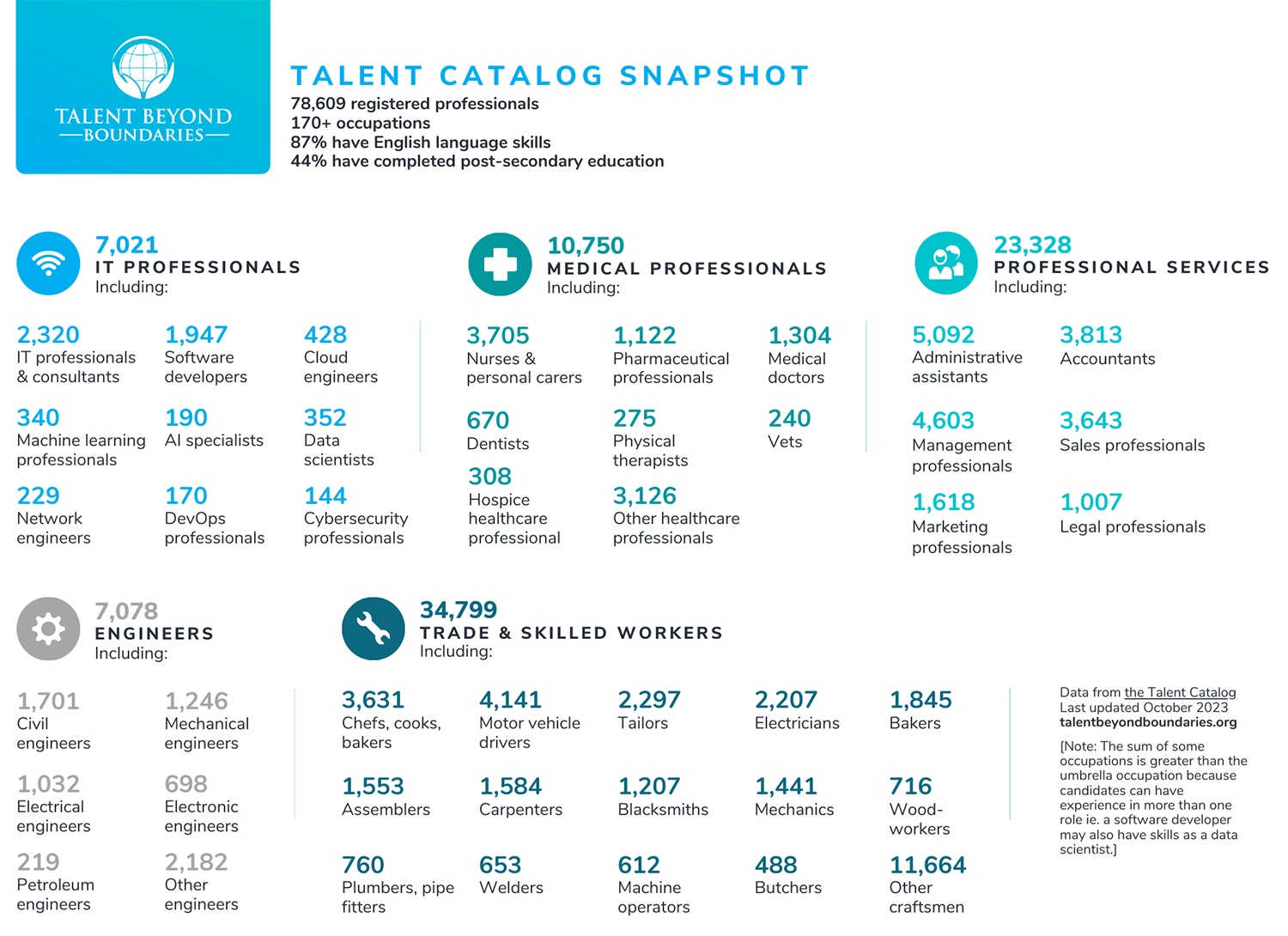In the face of unprecedented workforce challenges, higher education institutions can advance inclusivity and innovation by embracing displaced talent.

As the higher education sector grapples with complex workforce challenges, from staffing shortages to employee burnout, the need for innovation is undeniable. In 2022, according to EDUCAUSE, a plurality of senior IT leaders (42 percent) reported that their IT organization had become smaller during the previous twelve months. In addition, 55 percent of survey respondents indicated they were leaving, strongly considering leaving, or planning to retire soon from their institution.Footnote1 Since a wave of this size will undoubtedly have a significant ripple effect, the time is now for higher education institutions to explore solutions that can breathe life into their workforce.
Displaced workers are an untapped talent pool that can rise to meet the burgeoning labor demands in this sector. The United Nations High Commissioner for Refugees (UNHCR) estimates that as of mid-2023, there were over 110 million forcibly displaced people worldwide, over half of whom are working age.Footnote2 The world's forcibly displaced leave their homes and belongings behind when they flee, but they carry with them their skills and years of experience. And yet many of these individuals, despite their evident talent, find that securing work is difficult due to their precarious legal status and the reality that pathways such as employment-based visas are not traditionally built with them in mind.
These obstacles have created a significant pool of overlooked talent as an overwhelming number of individuals with sought-after skills remain unnoticed and unacknowledged by industries in dire need of their expertise. Meanwhile, the higher education sector in the United States is at a crossroads, facing a pressing need for agility, novel approaches, and technological breakthroughs. Amid this backdrop, the transformative potential of skilled refugees has emerged as a creative solution for employers who are sourcing fresh talent.
The Growing Movement for Displaced Talent Mobility
In the past few years, momentum for labor mobility pathways has mitigated many of the barriers to hiring refugees. The 2023 Global Refugee Forum highlighted the increasing adoption of economic immigration schemes that recognize the unique challenges refugees face, opening the doors for employers to actively recruit from this untapped talent pool. Australia and Canada, for example, have taken major steps to extend or make permanent programs that allow refugees from abroad to use their skills to migrate.Footnote3
While a tech talent shortage looms across all industries in the United States,Footnote4 refugees remain uniquely overlooked in this labor market. Those who are open to hiring refugees and act first will benefit from early access to the top global talent. And the talent is undeniably there: the open-source Talent Catalog from Talent Beyond Boundaries boasts over 7,000 IT professionals eager and ready to contribute to the American workforce (see figure 1).

In the United States, nonprofit research institutions—including most higher education institutions—are eligible to sponsor potential employees through a visa called H-1Bs. Though most employers must enter a lottery for the privilege to hire someone through an H-1B, colleges and universities can bypass this lottery because they are exempt from the strict statutory cap on H-1Bs. This allows universities and colleges to hire through an advantageous visa pathway, opening the door to seamlessly tap into a pool of talent from around the globe, enriching their communities.
The Outsized Benefits of Hiring Displaced Talent
Early adopters have reaped unprecedented gains from hiring displaced talent: according to a 2023 UNHCR survey, over 66 percent of alumni of Canada's Economic Mobility Pathways Pilot, a program that matches skilled refugees with employers, reported that they wanted to stay at their current job for the next five years.Footnote5 Similarly, the one-year retention rate of candidates hired through the Talent Catalog currently stands at 93 percent.Footnote6 Whereas retention remains a pressing issue for the IT workforce in higher education, refugees are highly committed to their employers, offering stability and security.
Some players in other industries have already caught on to the advantages of hiring refugees. In Canada, where there is a shortage of up-and-coming IT professionals, organizations like CGI have hired through the Talent Beyond Boundaries Talent Catalog.Footnote7 One of their hires, Daniel, had over fifteen years of IT experience but could not utilize his skills due to a lack of legal status as a refugee. Daniel is just one of the thousands of people that the higher education sector ought to consider as it hopes to resolve its workforce woes.
The advantages of hiring refugees extend far beyond filling IT skill gaps. These individuals bring with them a wealth of diverse experiences and perspectives, enriching the cultural fabric of campuses and fostering a global outlook within higher education institutions. Incorporating refugees not only meets immediate technical demands but also supports the evolving need for a more diverse workforce. It presents an opportunity to tap into the wealth of ideas, knowledge, and abilities of people from different backgrounds and perspectives.
Hiring refugees can also bring a significant boost to staff morale. First, doing so alleviates the workload among existing staff members, rendering their daily tasks more manageable and reducing burnout. With 58% of IT leaders reporting in October/November 2023 that they had experienced "some" or "a lot" of work-related burnout in the past twelve months, this would not only enhance productivity but also improve overall job satisfaction.Footnote8 Moreover, embracing refugee talent underscores a firm commitment to diversity, equity, and inclusion—values that staff often view positively. This action demonstrates an organization's dedication to creating a more inclusive workplace and society, which can foster a sense of organizational pride and purpose. Such initiatives thus contribute to a healthier work environment while bolstering the organization's reputation as a socially responsible and forward-thinking employer.
The Role of Higher Education Institutions
Higher education institutions already are home to faculty, students, and staff from a wide array of cultures, backgrounds, and viewpoints. This global community makes these institutions particularly well-suited for hiring talented refugees. By integrating refugees into their IT workforce, these institutions can extend their ethos of inclusivity beyond the campus, demonstrating a practical commitment to societal betterment. Most colleges and universities already have the framework to adopt a refugee integration program, since they currently sponsor H-1B visas for employees. This case is no different: it's simply that another pool of talent is being considered for sponsorship. The presence of refugees on campus not only benefits these individuals directly but also contributes to the community by introducing new ideas and fostering a richer, more diverse learning environment.
*****
The integration of refugees into the workforce is one solution to immediate IT staffing needs in higher education. It represents a commitment to social responsibility and provides a strategic approach to building resilient, dynamic, and inclusive academic environments.
Notes
- Jenay Robert, Smaller and Restructured: How the Pandemic Is Changing the Higher Education IT Workforce, research report (Boulder, CO: EDUCAUSE, May 2022); EDUCAUSE, 2022. Mark McCormack, "EDUCAUSE QuickPoll Results: The Workforce Shakeup," EDUCAUSE Review, March 4, 2022. Jump back to footnote 1 in the text.
- UNHCR Refugee Data Finder (website), last updated October 24, 2023; "Demographics of Forcibly Displaced People" (chart), June 14, 2023, UNHCR Figures at a Glance (website). Jump back to footnote 2 in the text.
- Patricia Danzi, "Summary of the Global Refugee Forum 2023 by the Co-Hosts and Co-Convenors," UNHCR, December 15, 2023; "Australian Government Makes 23 Pledges at 2023 Global Refugee Forum," Refugee Council of Australia, February 6, 2024; "Canada Builds on Pledges and Partnerships at the Global Refugee Forum," Immigration, Refugees and Citizenship Canada, news release, December 15, 2023. Jump back to footnote 3 in the text.
- Insights, "New Approaches to the Tech Talent shortage," MIT Technology Review, September 21, 2023. Jump back to footnote 4 in the text.
- UNHCR Canada, Economic Mobility Pathways Pilot: Alumni Survey Report 2023, p. 9. Jump back to footnote 5 in the text.
- Talent Beyond Boundaries, "Reflecting on a Year of Impact and Promise: TBB's 2023 Highlights," LinkedIn, December 21, 2023. Jump back to footnote 6 in the text.
- "A Primer on the Canada Tech Brain Drain and How to Solve It," Randstad (website); February 9, 2023; Alec Regino, "How Preparation, Chance, and Opportunity Brought Daniel from Syria to Canada," Talent Beyond Boundaries (website), March 21, 2023. Jump back to footnote 7 in the text.
- Mark McCormack, The IT Leadership Workforce in Higher Education, 2024, research report (Boulder, CO: EDUCAUSE, March 2024). Jump back to footnote 8 in the text.
Betsy Fisher is the U.S. director of Talent Beyond Boundaries.
Alec Regino is the Communications Manager, Australia & North America, for Talent Beyond Boundaries.
© 2024 Betsy Fisher and Alec Regino. The content of this work is licensed under a Creative Commons BY-NC 4.0 International License.
